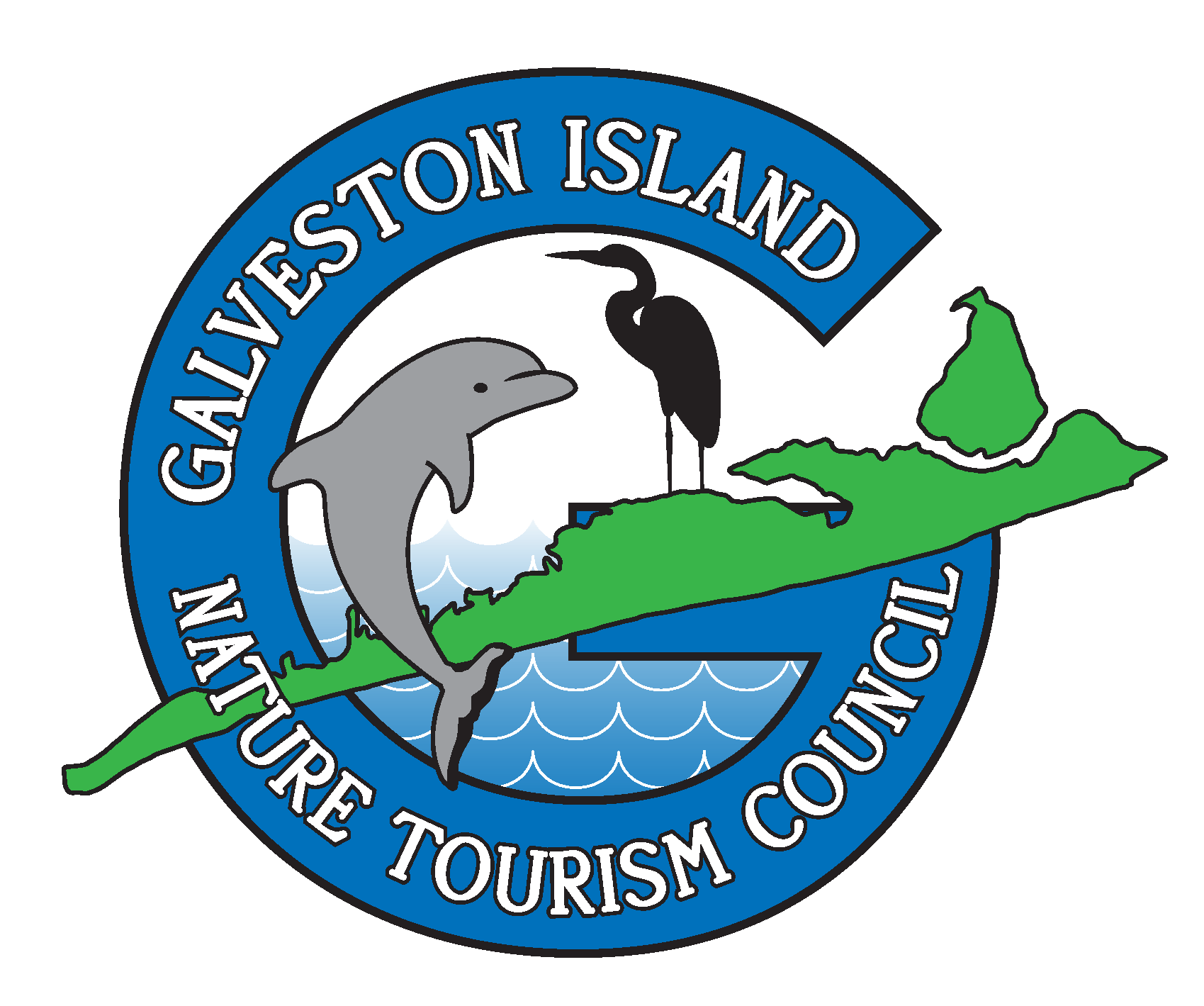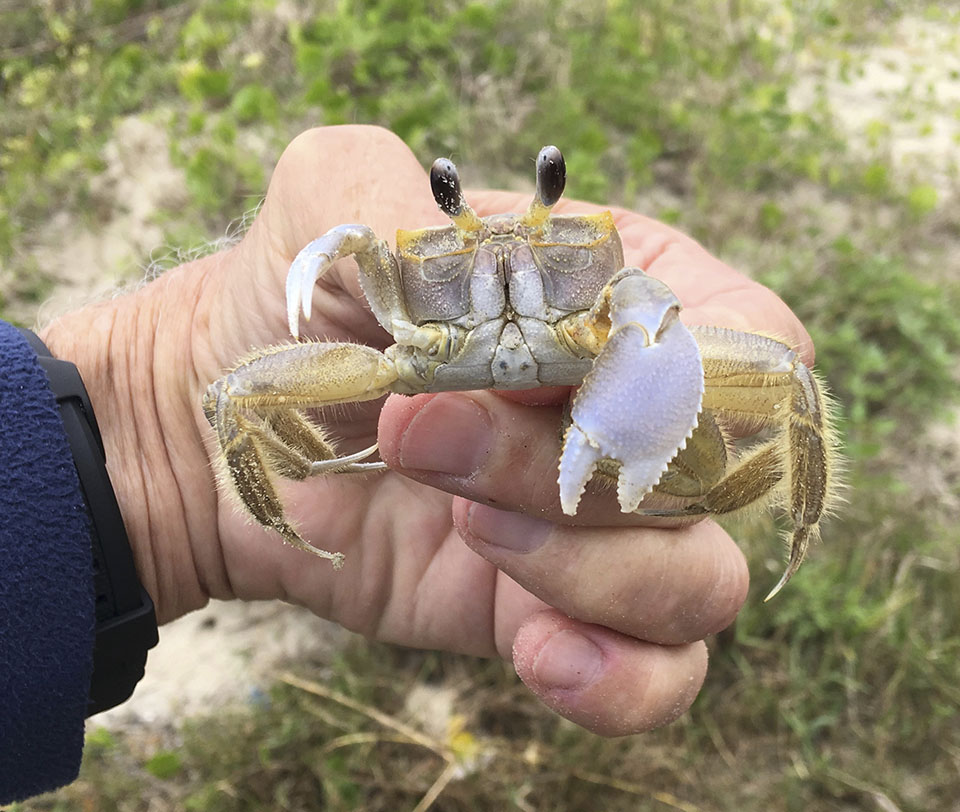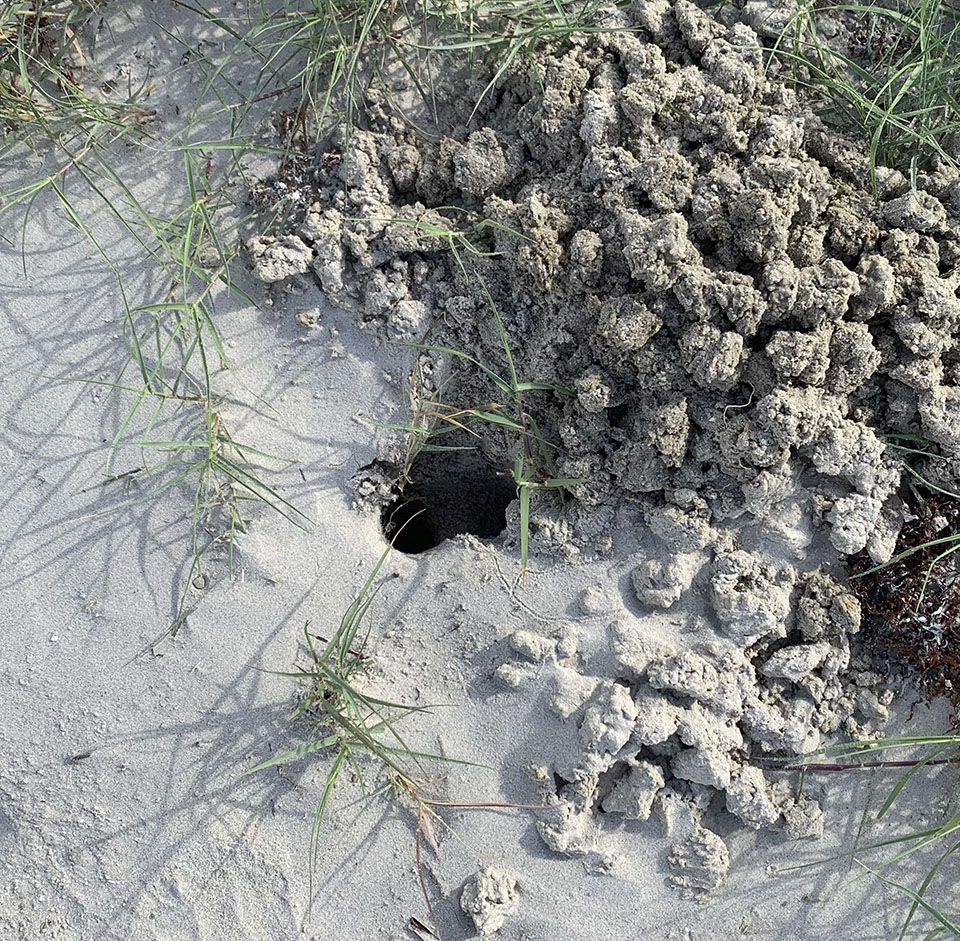by Steve Alexander
Sandy beaches swarm with people during the spring and summer months when it’s warm and sunny. It’s something you can count on. But as the sun sets, visitors pack up and head for home, leaving the beach practically deserted at night.
So, after most people have gone home and are preparing for bed, why not head to the beach with a flashlight in hand. There in the dark, pause a moment. Notice how cool and refreshing night air has replaced the sun’s intense heat. And how the sun’s intense glare has been replaced by the light from stars above. If away from dwellings, those stars will be brighter than you’ve ever seen.
Now walk with flashlights on, focusing your attention on the sand ahead. Walk along waving your flashlight back and forth. See any movement? You likely will sooner or later. Movement, when you see it, is likely that of scurrying ghost crabs, also called sand crabs (see photo).
Ghost crabs are common residents of Texas beaches. They inhabit dunes – the piles of sand on the upper beach covered by vegetation. During daylight hours, you’re unlikely to spot one. They spend daytime hunkered down in their burrow, the deep hole they dig in the sand (see photo). Staying there during the day allows them to avoid both the heat of the day and being spotted by predators, both terrestrial (like coyotes and raccoons) and aerial (like night herons).
At night, feeling more secure, they leave their burrows in search of food, mainly things cast ashore by waves like jellyfish, dead fish, seaweed and the remains of other plants and animals. They make good use of whatever they find, even eating jellyfish like the stinging Portuguese man-o-war.
If an edible item washes up too far from their burrow, ghost crabs are known to drag it. And for big items too good to pass up, they’ll construct a new burrow at its edge.
On one occasion, I came upon a dozen newly dug burrows around the edge of a massive leatherback sea turtle. Its washed-up carcass had been picked nearly clean. On another occasion, I observed a number of freshly dug burrows around the edge of a large black drum.
At night, ghost crabs blend in perfectly with the color of sand. When still, you can be looking directly at one and not see it, hence the name “ghost” crab. It’s only when they move that their presence can be detected.
It’s that movement to look for as you walk down the beach, waving your beams of light into the distance ahead. After spotting movement, you may decide to follow. But beware!
This eight-legged creature moves fast, skittering across the sand at 10 feet per second, and they also can stop on a dime and change direction in an instant. These unique abilities earned them the genus name Ocypode, Latin for “fleet-footed.”
Add to this already outstanding repertoire another ability: when cornered, they can instantly bury themselves in sand to escape detection. So, just when you think you have them cornered, they’re gone.
Some nights out, you may see several dozen crabs. On other nights, only a handful. Some are small, others big – the latter measuring about 3 inches across its body and being much speedier.
Whether big or small, it is advisable not to “catch them” or pick them up, since they can deliver a painful pinch with their pincer-like claws. And picking them up can also harm them. After all, it’s the chasing, not the catching that’s fun.
After a bit of chasing, move down to the water’s edge for other sightings. You may see a ghost crab or two down there as well wetting its gills, occasionally necessary to keep their gills wetted, a necessity to allow them to collect oxygen from the air.
Also, you may see other sights at the water’s edge: speckled crabs digging for bean clams in the shallow surf, or Atlantic stingrays patrolling shallow waters for food at night.
And lastly, a rare sighting, but one you’ll never forget- breaking waves that glow in the dark. This production of light, a phenomenon called bioluminescence, occurs when there’s an overabundance of the dinoflagellate Noctiluca scintillans– also known as sea sparkle.
Now you know- the beach is open at night, too. It’s a different world, with a unique magic at night. This summer, give it a try.
Steve Alexander
Steve Alexander teaches wetlands management at Texas A&M University at Galveston and is a former member of the Board of Directors of the Galveston Island Nature Tourism Council. He is the author of Exploring Galveston: A Naturalist’s Guide to the Island.



